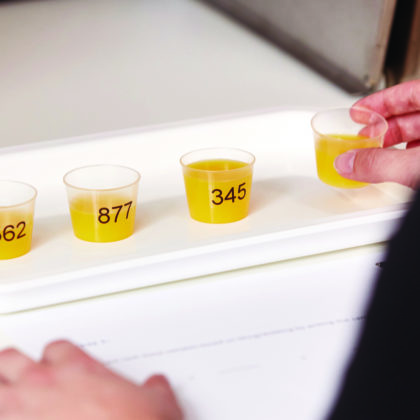Needing to make an ingredient switch to a product or a change in processing and want to know if your consumers perceive a difference?
Perhaps you’re wanting to reduce the amount of a certain ingredient in your product and want to know if it results in sensory changes. By utilising CASS expertise in sensory evaluation methods, you can gain valuable insights into the changes of your product. We provide easy to understand reports, with a solid data analysis and clear recommendations, giving your company the confidence to make data driven business decisions.
A key resource at CASS is our descriptive analysis panel which utilises humans as analytical instruments. The CASS descriptive analysis panel consists of n=8-16 highly trained panellists who objectively describe and quantify sensory attributes. Over the years, our panellists have provided invaluable insights into the characterisation and flavour profiling of food items including fruit and vegetables, fish, seafood and meat, infant formula, rice and even beauty and personal hygiene products including toilet paper!







